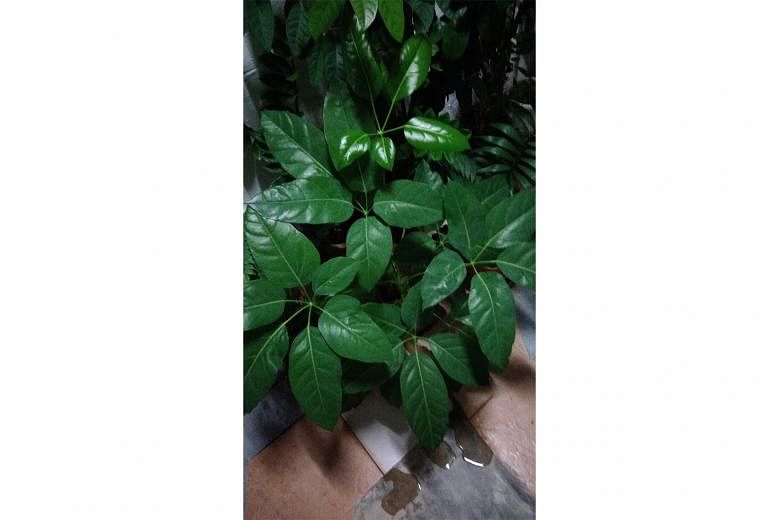MULTI-COLOURED BOUGAINVILLEA GRAFTED FROM DIFFERENT SPECIMENS
I bought this bougainvillea plant about two years ago and it had pink, yellow and white flowers. Then it stopped flowering. Now, only pink flowers are seen. How do I bring out the other colours of the blooms? Also, what caused the yellow spots on the leaves? The plant gets about six hours of afternoon sun every day.
S. Kumar
Bougainvillea plants with multi-coloured bracts around the flowers are often sold as grafted specimens. Stems from different coloured cultivars are grafted onto a common root stock.
With this in mind, it is important to not prune such stems that are attached to the root stock. If this is done, you may lose portions that produce certain floral colours.
As for the yellow spots, if these occur during the rainy season, they could be due to a fungal disease. You may want to remove infected leaves to prevent the spread of the disease.
Also, ensure your plant is grown in an area with sufficient air circulation and sunlight. The leaves should be dry. Avoid soil splashes. You may reduce the incidence of disease by providing plants with a clear shelter to keep out the rain as well as by spraying a preventive fungicide.
OCTOPUS TREES PROVIDE GOOD FOLIAGE
This plant in my garden was not grown by anyone. It grows quite fast and its leaves are also quite large. What plant is it and is it a flowering species?
Michael Fong
The plant you have is likely a Schefflera species. The most common species that looks like the one you have is the Schefflera actinophylla. It grows into a large, multi-branched tree and its common names include Umbrella Tree and Octopus Tree.
Smaller specimens of the plant make good foliage candidates in large containers.
It is also grown in outdoor landscapes and admired for its foliage and growth habit.
In mature specimens, plants produce a branched inflorescence that looks like the tentacles of an octopus.
DAISY-LIKE FLOWERS ON PLANT ARE RICH IN NECTAR
Could you help identify this flowering plant with blooms that look like daisies? I have seen it growing around open grass patches.
Justin Tan C.L.

The plant is a common weed that is botanically known as Tridax procumbens. It is also known commonly as Coat Buttons and Kanching Baju. Its daisy-like flowers are probably rich in nectar and attract butterflies.
NETS CAN HELP KEEP BUGS OUT
How do you prevent pests from eating the flower buds of orchid spikes?
Ong Eng Siong
Common pests that consume orchid flower buds and petals include beetles and slugs. These are large pests that can be easily excluded if developing inflorescences are protected with a physical barrier.
In nurseries, it is common to see plants being cultivated in netted enclosures, which are a sustainable and chemical-free method to reduce damage caused by these garden pests.
DROPPING LEAVES COULD BE DUE TO WATERING ISSUES
I have kept this plant for about a year. Recently, four or five leaves started dropping daily. The plant is also growing new leaves and flower stalk. Is the plant dying and how can I save it?
Winston Seah

The plant is the Codiaeum variegatum and it is commonly called croton by gardeners.
The issue described appears to be one that is related to water. Since the plant is grown in a pot, was it allowed to dry out on several occasions? A plant that has been dried out and wilted will most probably have its lower leaves turning yellow and dropping off.
You may want to ensure your plant is watered regularly and thoroughly. If the plant's roots have filled the pot, move the plant into a larger container. A larger pot with more soil volume will be able to hold more water for the plant's use.
You may also want to check the health of your plant's roots by taking the plant out of the pot and inspecting the root system. Healthy roots will appear white and solid. If roots are black and mushy, they are likely dead and this could be due to overwatering. Such roots will not be able to uptake water and should be pruned.
If there are white cottony masses, they could be root mealy bugs. A chemical pesticide soak, such as one using cypermethrin, will kill the pests.
• Answers by Dr Wilson Wong, an NParks-certified practising horticulturist, parks manager and ISA-certified arborist. He is the founder of Green Culture Singapore and an adjunct assistant professor (Food Science & Technology) at the National University of Singapore.
• Have a gardening query? E-mail it with clear, high-resolution pictures of at least 1MB, if any, and your full name to stlife@sph.com.sg. We reserve the right to edit and reject questions.


